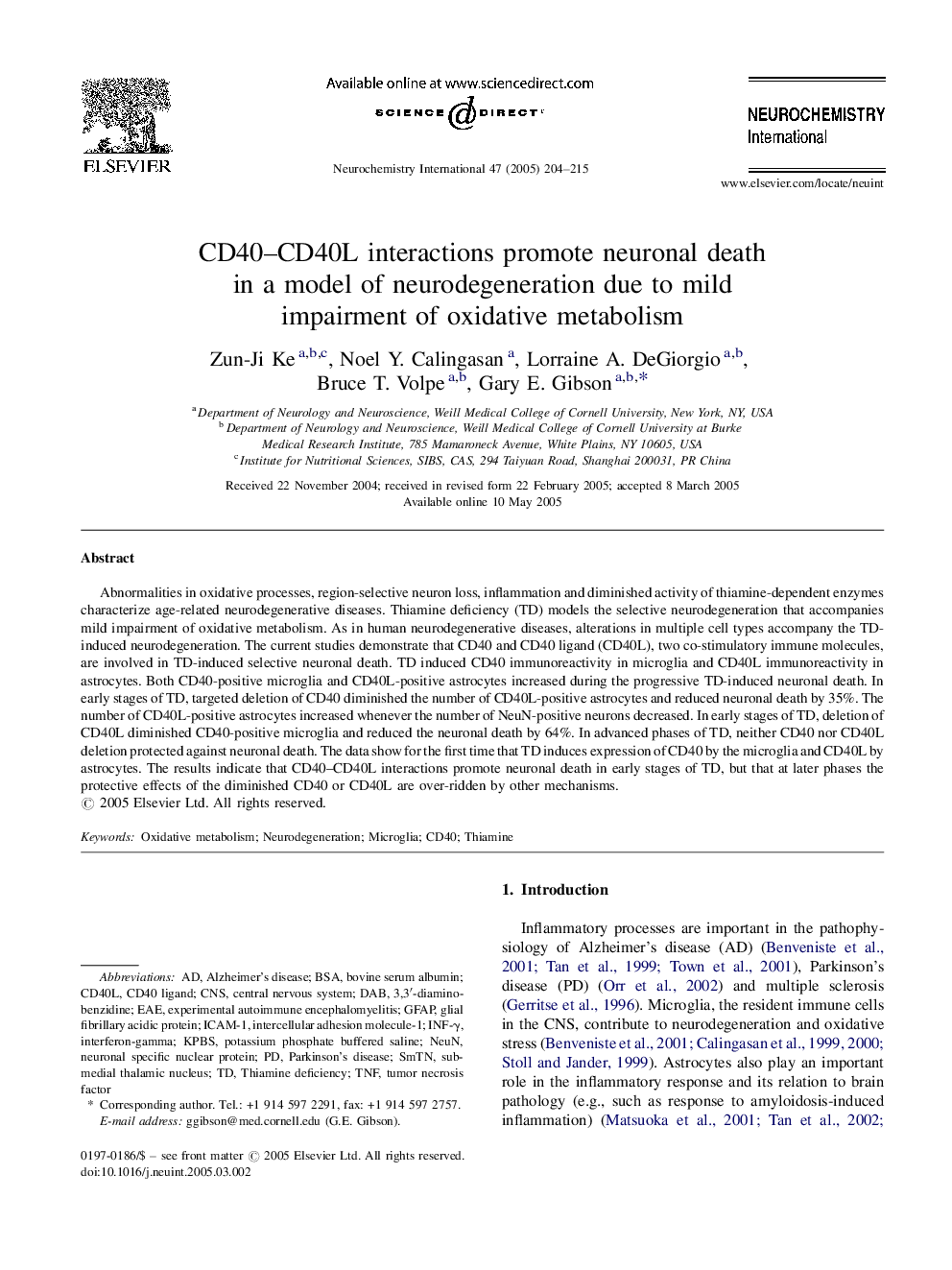| Article ID | Journal | Published Year | Pages | File Type |
|---|---|---|---|---|
| 10958394 | Neurochemistry International | 2005 | 12 Pages |
Abstract
Abnormalities in oxidative processes, region-selective neuron loss, inflammation and diminished activity of thiamine-dependent enzymes characterize age-related neurodegenerative diseases. Thiamine deficiency (TD) models the selective neurodegeneration that accompanies mild impairment of oxidative metabolism. As in human neurodegenerative diseases, alterations in multiple cell types accompany the TD-induced neurodegeneration. The current studies demonstrate that CD40 and CD40 ligand (CD40L), two co-stimulatory immune molecules, are involved in TD-induced selective neuronal death. TD induced CD40 immunoreactivity in microglia and CD40L immunoreactivity in astrocytes. Both CD40-positive microglia and CD40L-positive astrocytes increased during the progressive TD-induced neuronal death. In early stages of TD, targeted deletion of CD40 diminished the number of CD40L-positive astrocytes and reduced neuronal death by 35%. The number of CD40L-positive astrocytes increased whenever the number of NeuN-positive neurons decreased. In early stages of TD, deletion of CD40L diminished CD40-positive microglia and reduced the neuronal death by 64%. In advanced phases of TD, neither CD40 nor CD40L deletion protected against neuronal death. The data show for the first time that TD induces expression of CD40 by the microglia and CD40L by astrocytes. The results indicate that CD40-CD40L interactions promote neuronal death in early stages of TD, but that at later phases the protective effects of the diminished CD40 or CD40L are over-ridden by other mechanisms.
Keywords
EAESmTNpotassium phosphate buffered salineTNFINF-γCD40LKPBSCD40NeuNDABGFAPICAM-13,3′-diaminobenzidineBSAbovine serum albuminexperimental autoimmune encephalomyelitisinterferon-gammaAlzheimer's diseaseParkinson's diseaseNeurodegenerationThiamineCNScentral nervous systemtumor necrosis factorCD40 ligandOxidative metabolismintercellular adhesion molecule-1MicrogliaGlial fibrillary acidic proteinneuronal specific nuclear proteinthiamine deficiency
Related Topics
Life Sciences
Biochemistry, Genetics and Molecular Biology
Cell Biology
Authors
Zun-Ji Ke, Noel Y. Calingasan, Lorraine A. DeGiorgio, Bruce T. Volpe, Gary E. Gibson,
